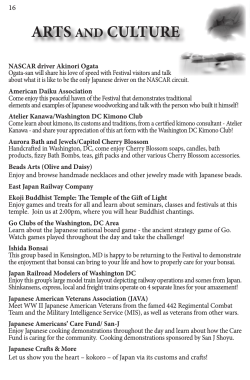
AiShinKai Some of the Historic Swords in the Collection of the Bannister Dojo
Some of the Historic Swords in the Collection of the AiShinKai Bannister Dojo Katana by Tsuda no Kami Omi no Diajo Sukenao, August 1681. Blade forged in itame style with double bohi (grooves), length 29.75 inches. Mounted with custom shakudo (gold-copper mix) fittings featuring gold mon (crest) of the Tsubomi Seishin Kan Bannister Dojo together with goil foil seppa (spacers), two-piece solid silver habaki (collar) and iron Choshu-style tsuba (guard). Saya (sheath) in custom akacha (red-brown) pebbled laquer with gold shitadome (eyelets) and handmade silk sageo (retaining cord). Katana Mumei (unsigned) Koto period (pre-1600) blade forged in itame style, length 28.8 inches. Mountings include Edo period (1603-1868) fuchi (throat) and buffalo horn kashira (butt), solid silver habaki, and a fine Edo period Kokinko style tsuba. Katana Graceful 27” gendai (modern era) sugaha (straight temper) blade with double bohi by Kanemitsu. Silver mountings include solid silver habaki featuring Tachibana clan mon. Tanto Mumei sanbon-suji (three cedars) style, slender 11.5” blade mounted aikuchi (unwrapped) style with copper and gold Nio guardian figure menuki and two-piece solid silver habaki. Yari Mumei 10.5” triangular-section su-yari (straight spear) with bohi mounted on Edo period oak pole complete with iron ishizuki (counterbalance/butt) and laquered saya. Total length without saya 66.25”. Copyright 2010 AiShinKai and Pacific Northwest Budo Association. No portion may be reproduced without express written consent. AiShinKai Japanese Martial & Cultural Arts Edmonds, WA - Shoreline, WA www.aishinkai.com Pacific Northwest Budo Association A 501c3 non-profit educational organization www.pacificbudo.org Tsurugi Nodachi Tachi Katana Wakizashi Tanto Naginata Yari Shinken Nihonto Japanese Swords Objects d’Art and Tools for Developing Self-mastery in the Modern Era Dr. Jonathan Bannister, Ph.D./Ma.D.Sc, AiShinKai - Harmonious Heart Association Pacific Northwest Budo Association What is a Nihonto? A Japanese sword, or nihonto is a term descibing any traditionally-forged, bladed weapon of Japan. The word nihonto is never correctly applied to any blade made outside of Japan. There are several types of Japanese sword, and they are named by size and method of manufacture. The most famous Japanese sword is the katana. Like the older and longer tachi, a katana is a single-edged, two-handed saber. Beautifully curved, carefully forged and tempered, and mounted in gorgeous fittings, these weapons were traditionally worn by samurai from the 1400s onwards. Other nihonto types include: wakizashi, a shorter, mid-length sword; tanto, short sword; tsurugi, an old-style double-edged long sword; and odachi or nodachi, very long single-edged swords. Although pole-mounted weapons, the naginata and yari are considered part of the nihonto family because of the similar way in which they are forged. Modern and Classical Budo Sword Arts Arts in red will be experienced in this course Iaido Japanese swordsmanship studies how to draw and cut in the same motion. Typically practiced in solo forms, the art is highlydisciplined, with great attention to formal presentation and precision as means to cultivate personal dignity, fortutude, and calmness. Tamashi-giri refers to target test cutting with Japanese swords. Competitions are held world-wide, largely based on sword techniques developed for the Japanese army by Nakamura Taizaburo in 1925. Kendo is the way of the Japanese sword. In this art, the decision to fight has already been made, and fencing is employed to conquer your opponent. Practice is done with bamboo swords and protective armor, and is often quite vigorous. Inwardly, kendo expresses the highest ideals of modern Budo, with strong emphasis on the cultivation of character and social understanding. Naginata-do is an art that employs an enormous pole arm, a long staff with a sword blade on one end. Traditionally practiced by Japanese samurai women, following WWII the art expanded to include any participant who wishes to learn graceful and effective combative forms to develop physically and mentally. Jukendo is modern bayonet training with roots in Sojutsu, the way of the Japanese spear. The ancestor of Jodo, the way of the staff, and Aiki-jo, practitioners use either bayonet or spear as tools to hold a swordsman at bay. Jukendo is studied by Japan’s self-defense forces, and is also practiced for its own sake to promote character. Japanese Sword Appreciation Japanese swords are marvels of engineering and material science, made all the more impressive by their antiquity. They are made in two parts from indigenous iron called tamahagane. The first part is used to make a soft, low-carbon core, around which a second billet of high-carbon hard steel which has been forgewelded into many layers is wrapped. The resulting sandwich is then beaten out into a straight sword billet, then differentially-tempered to form an incredibly sharp edge and give the blade its distinctive curve. Interestingly, once polished, the entire surface area of the blade becomes the “edge,” and both the beautiful forging layer patterns and the tempering line become apparent. This unique process results in gorgeous works of art that are highlysought after by collectors and martial artists all over the world. Swords are cherished by the Japanese as family heirlooms, and are passed from generation to generation, maintained in all their original beauty with the utmost respect. The swords of Japan are called “souls of the samurai,” and are often mounted with fittings of bronze, gold and silver that are themselves works of high art. According to Japanese legend, the sun goddess Amaterasu gave the emperor three treasures: a sword of strength, a mirror or truth, and the jewel of wisdom. Japanese swordsmiths exhibit these treasures in each of their creations: the blades are polished like mirrors, and their sword fittings are as precious as the blades themselves.
© Copyright 2025





















